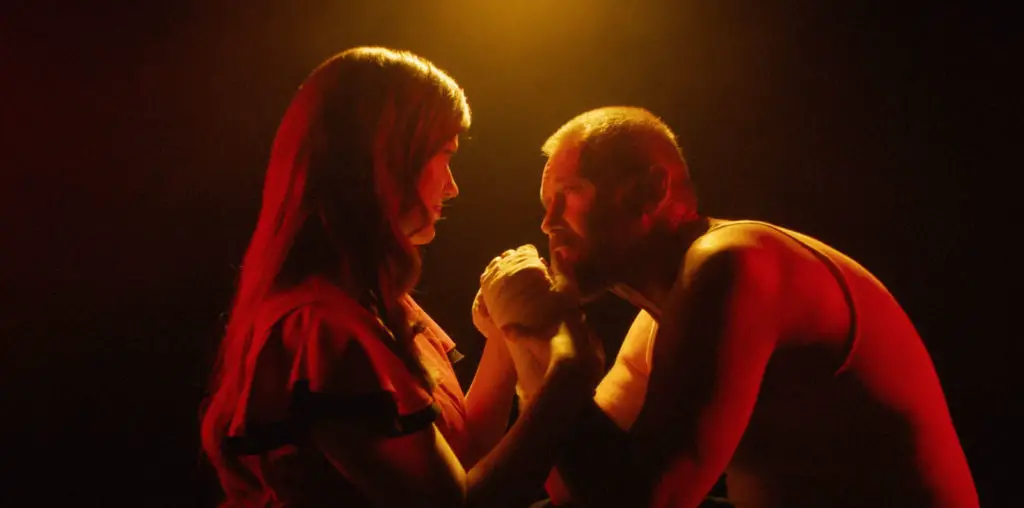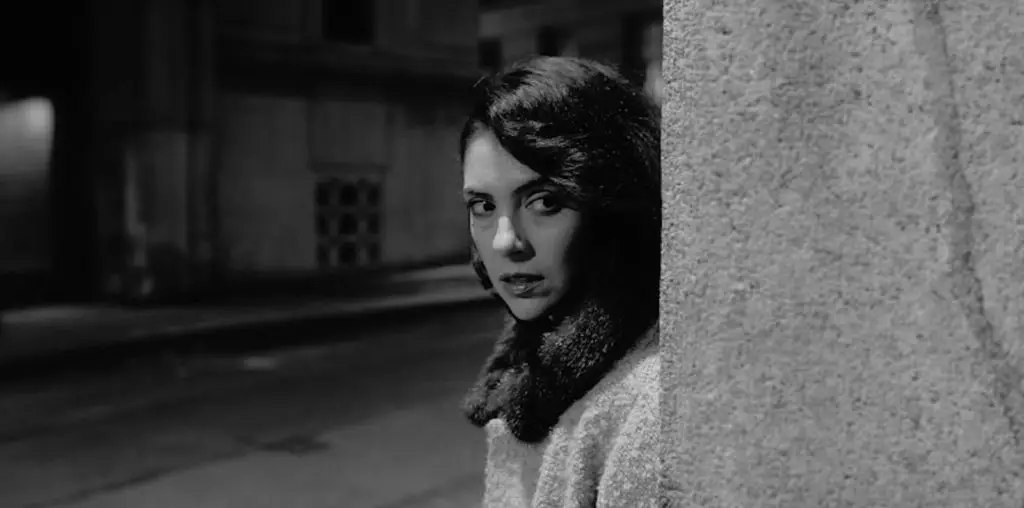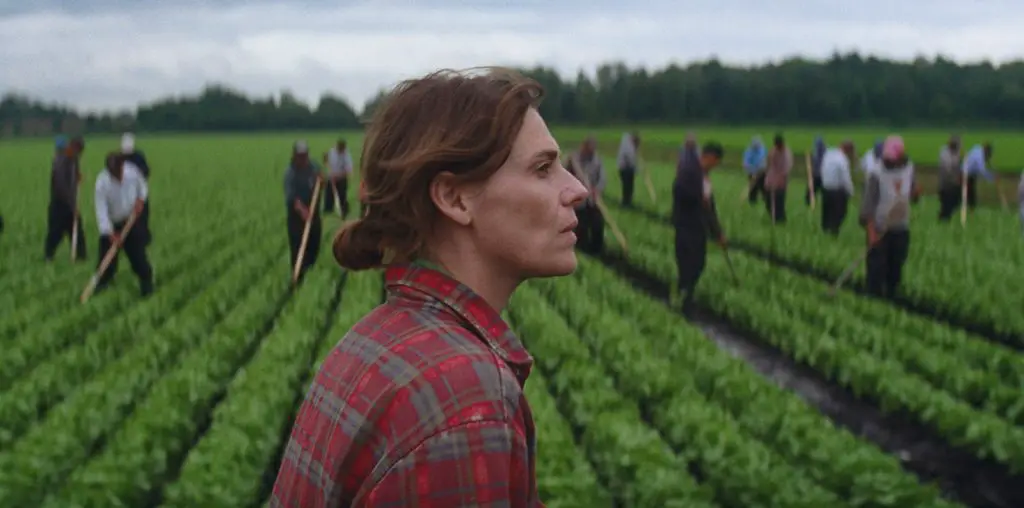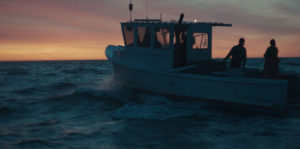
Writer/director Matthew Ya-Hsiung Balzer’s solid feature debut, The Catch, is a saltwater noir set in the middle of a lobster war in Maine. Beth McManus (Katia Winter) has been away from the Downeast coastal town where she grew up for five years. However, something awful happened in the big city, and now she is back. Her family back home is going through tough times. Someone is poaching the lobster traps of McManus and Son. The problem is, police can’t help unless Tom McManus (Bill Sage) or his son Bobby (Kyle Gallner) catch the culprit in the act.
Meanwhile, Beth’s stepmother Lilly (Emy Coligado) is riding her a*s about paying rent and putting in shifts at the local diner to help out. While hanging out with her brother one night, Beth spots her old boyfriend Dicky (James McMenamin) out in the ocean picking up a mysterious package from the deep. Her family does not care for Dicky one little bit, but Beth sneaks out at night to meet him.
Beth discovers Dicky has a dark sideline picking up pounds of black market weed from Canada. He invites her to go in on heisting 5 to 10 pounds and disappearing. Beth agrees but then meets her drug-dealing aunt Hilde (Melissa McMeekin) behind his back about moving the weed. Will this play out as intended, or will there be dangerous consequences? What happened in the city that caused Beth to flee? Who is poaching the lobster traps?
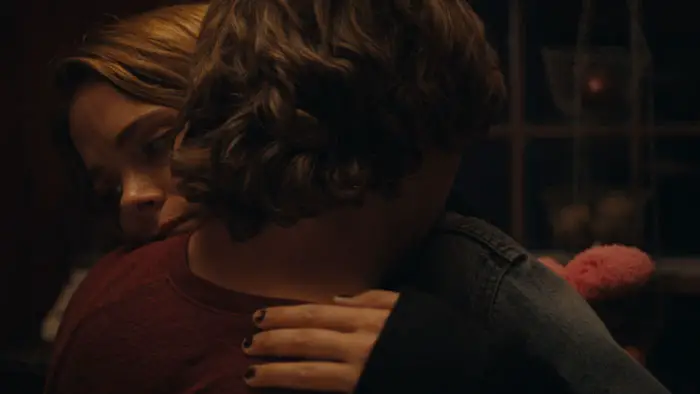
“Beth agrees but then meets her drug-dealing aunt Hilde behind his back about moving the weed.”
As someone who grew up on the coast of Maine, I can attest to the authenticity of the setting Balzer creates. He captures such iconic imagery of Maine that you can smell the seaweed from the harbors and the weather-beaten paint. Even more impressive is that cinematographer J.P. Wakayama achieved this while not shooting in the state. Rather, The Catch recreates a genuine Maine feel while being shot in Gloucester, Massachusetts.
It may not be Maine, but Wakayama finds the perfect spots to keep the daylight visuals dipped in melted butter. It is at night that the wicked good work occurs. Maine at night is a place so dark you can’t even see how close you are to the edge of the water. The director of photography does a masterful job of manipulating a full palette of the colors of darkness. The camera and lighting setups result in an undersea gallery of portraits in black. We are talking way past Venetian blind shadows here.
Balzer’s screenplay emphasizes the daily desperation that is all too common with Mainers. Even with fists full of lobsters, making a living in the #1 summer destination in the U.S. is an unearthly struggle. These waves of pressure drive many of the characters to do ill-advised acts. In this way, Maine makes a perfect setting for The Catch, as it is a scenic wonderland of the doomed.
McMeekin’s portrayal of Hilde is an excellent example of the salty flavor of this underworld of seagulls. Winter does a smashing job with her performance. I have seen the faces of a lot of folks crawling back to Maine after the city whips them good, and she wears it well. The actor does a perfect job carrying the movie as an imperfect character. One could even argue that we finally have a noir where the femme fatale is the lead. Or is it a gender reversal where McMenamin, who also does a great job, is the homme fatale? This is one of the many intriguing modern embellishments Balzer works into the classic noir format. The level of craft Balzer reaches in his debut is impressive. Catch The Catch when you find it.
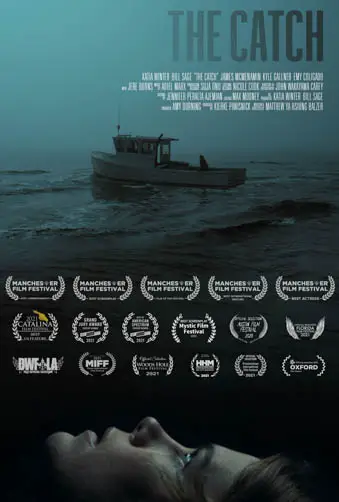
"…finds the perfect spots to keep the daylight visuals dipped in melted butter. "
